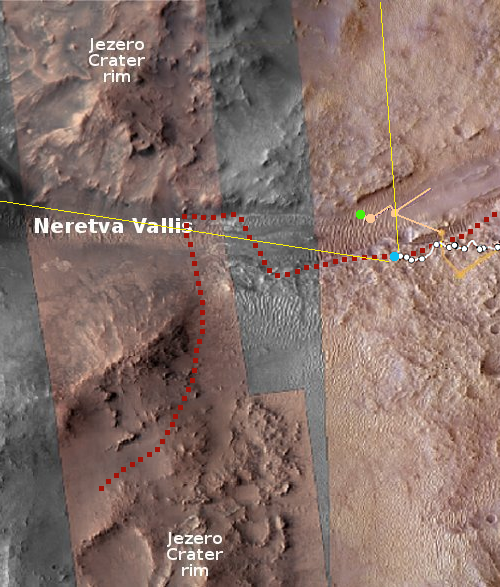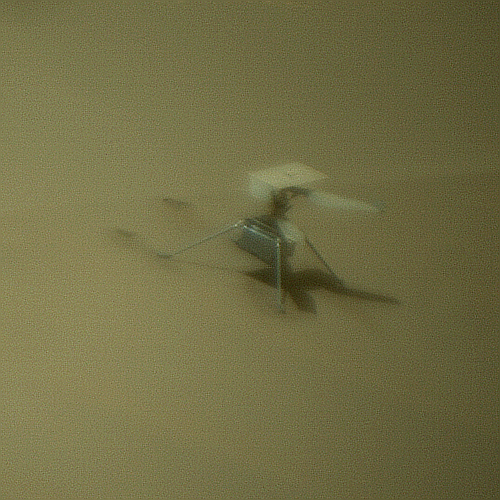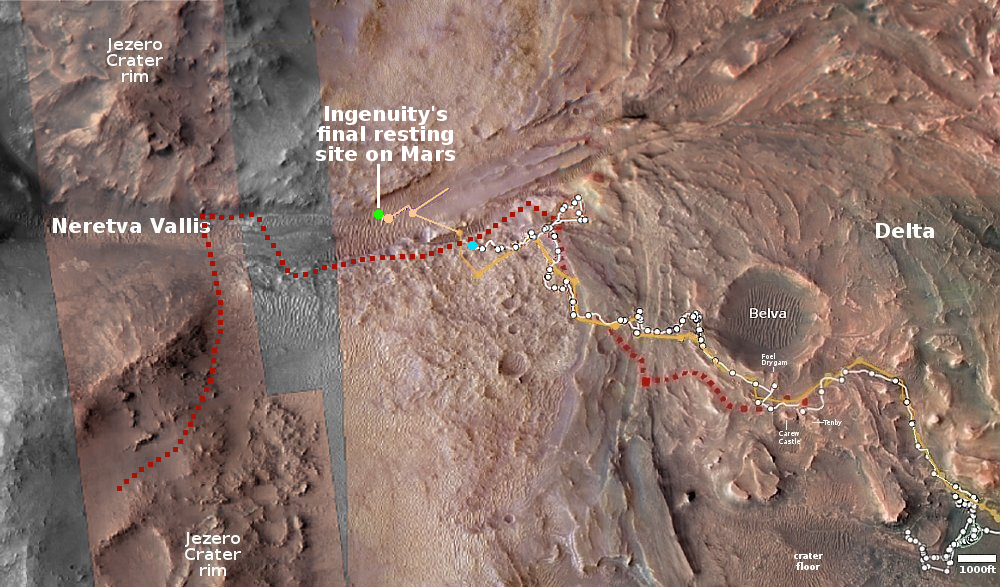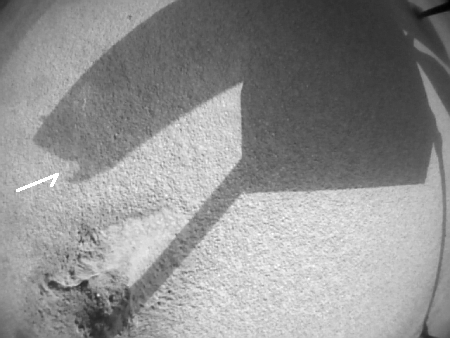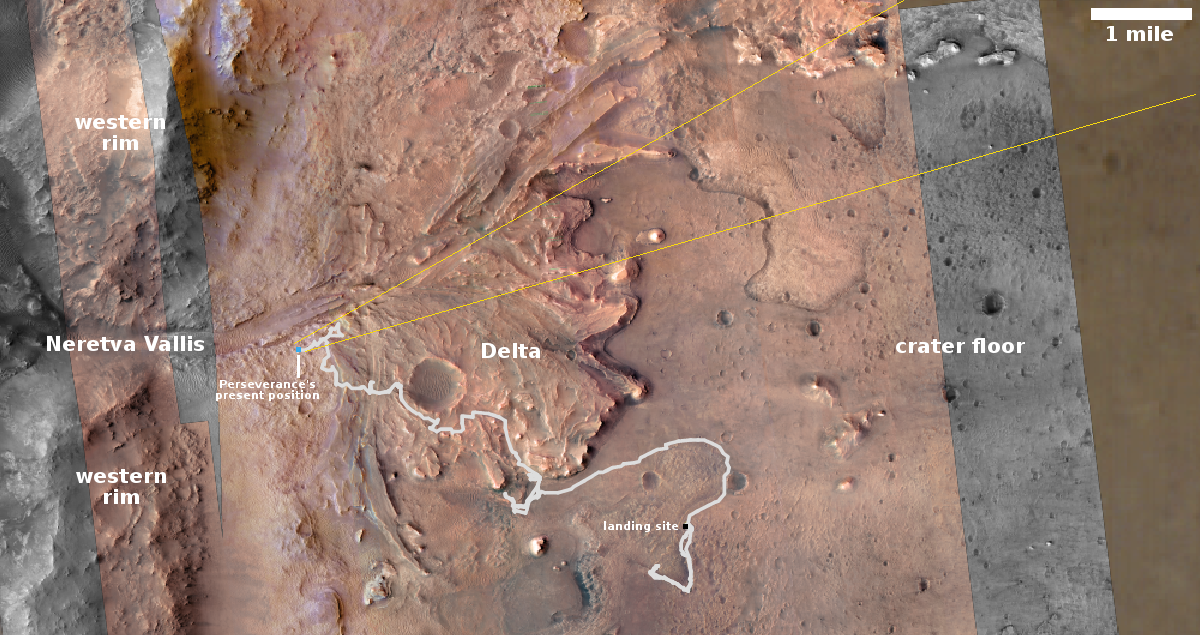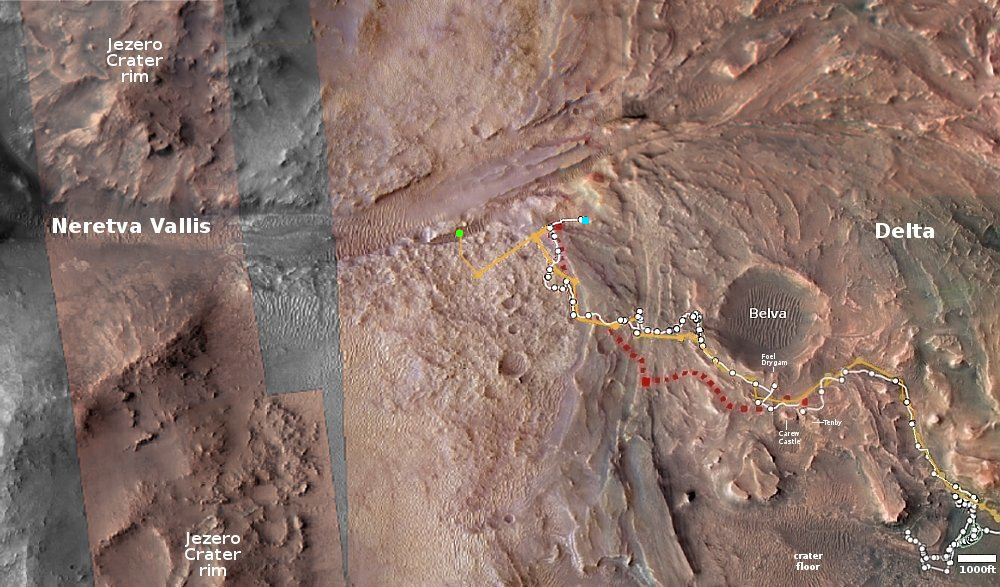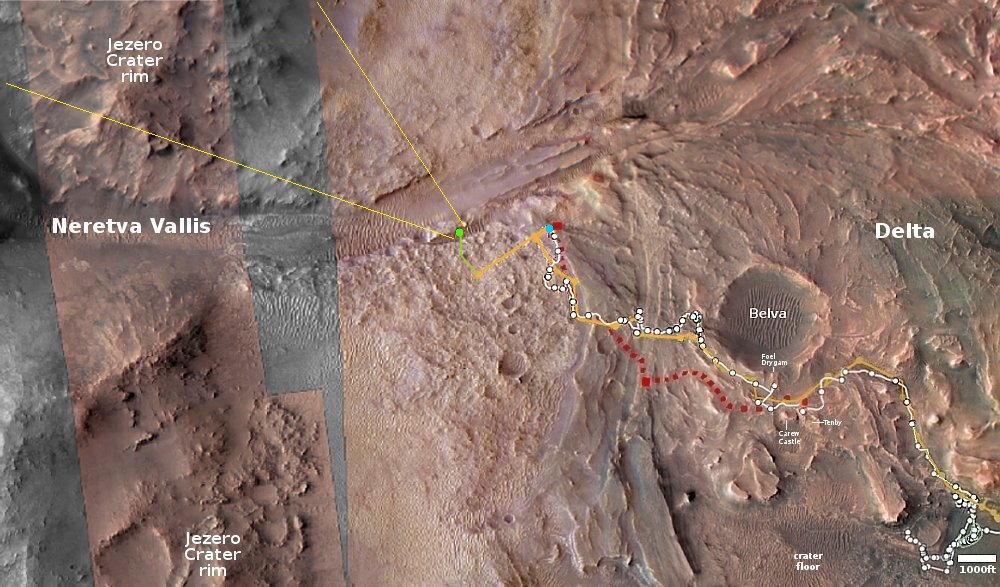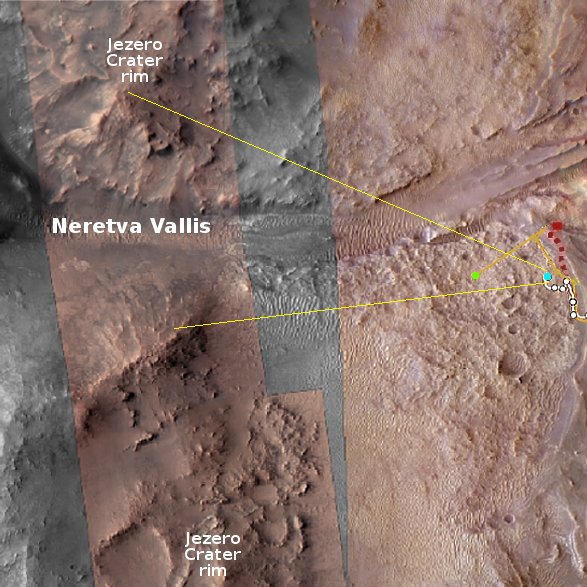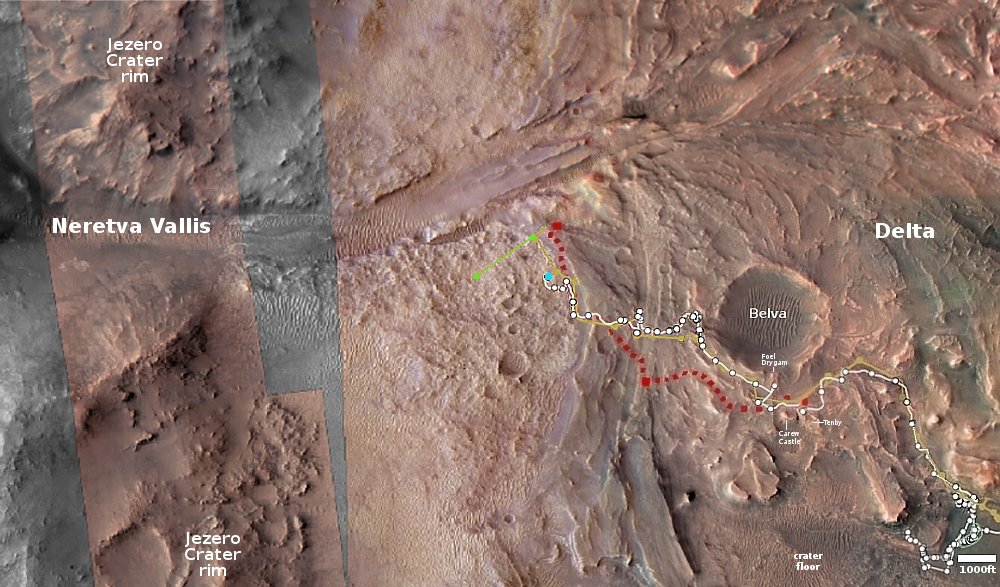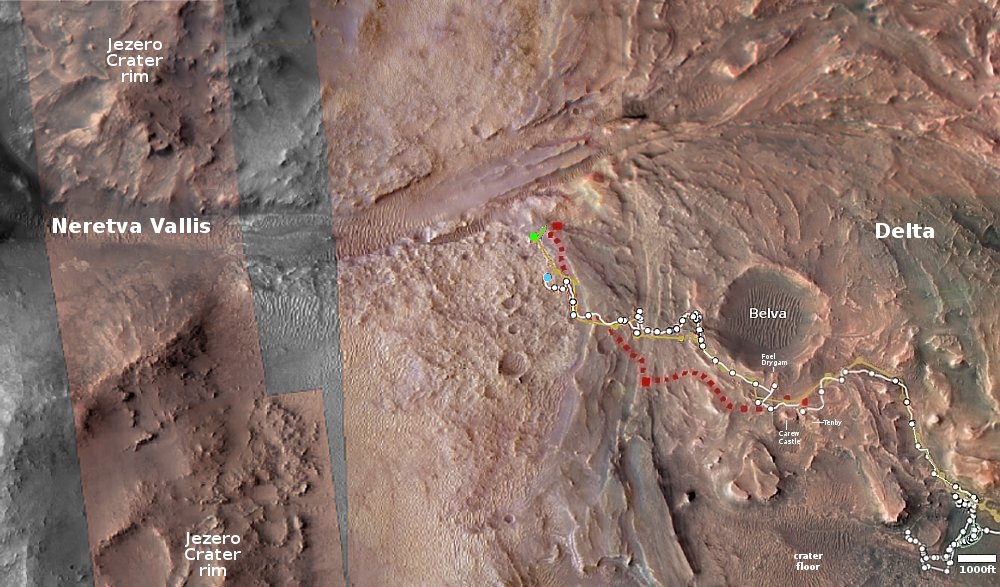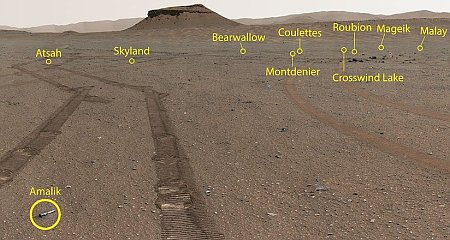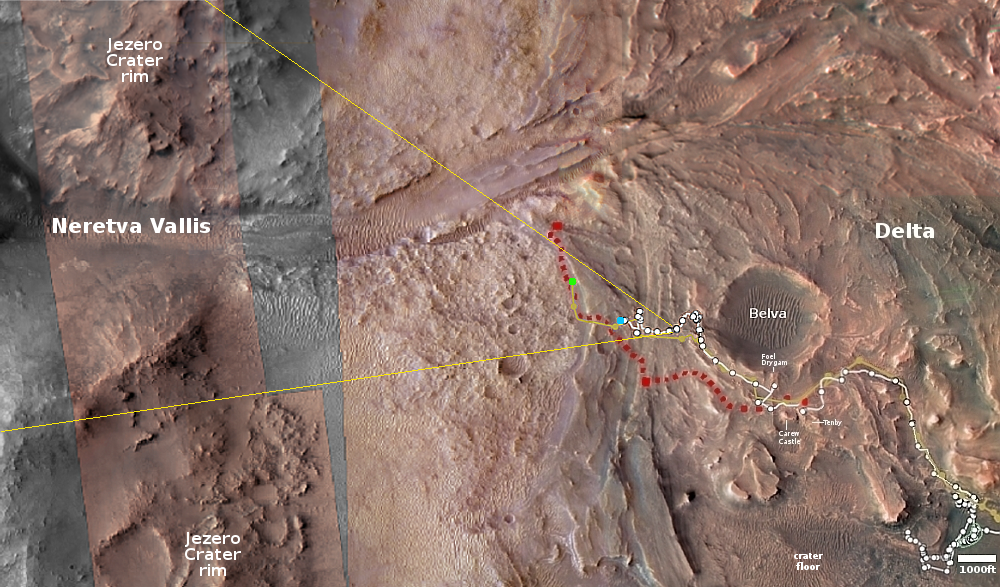Ingenuity’s final resting place on Mars
Time for one last cool image of Ingenuity. The picture above, cropped, reduced, and annotated to post here, was created from a mosaic of 67 images taken on February 21, 2024 by the high resolution camera on the Mars rover Perseverance. The white rectangle marks the approximate area covered by the image below, a mosaic of seven pictures taken on February 24, 2024 by Perseverance’s Remote Microscopic Imager camera, normally used to take very close images of nearby rocks but repurposed here to provide a close up of Ingenuity about 1,365 feet away, inside Neretva Vallis. Ingenuity is on the right, and the speck on the left is the section of the rotor blade that broke off and was apparently flung about 49 feet away.
On the overview map to the right, the blue dot marks Perseverance’s position, the green dot Ingenuity’s, and the yellow lines mark the approximate area covered by the panorama above. The red dotted line is Perseverance’s planned route in the coming months.
Time for one last cool image of Ingenuity. The picture above, cropped, reduced, and annotated to post here, was created from a mosaic of 67 images taken on February 21, 2024 by the high resolution camera on the Mars rover Perseverance. The white rectangle marks the approximate area covered by the image below, a mosaic of seven pictures taken on February 24, 2024 by Perseverance’s Remote Microscopic Imager camera, normally used to take very close images of nearby rocks but repurposed here to provide a close up of Ingenuity about 1,365 feet away, inside Neretva Vallis. Ingenuity is on the right, and the speck on the left is the section of the rotor blade that broke off and was apparently flung about 49 feet away.
On the overview map to the right, the blue dot marks Perseverance’s position, the green dot Ingenuity’s, and the yellow lines mark the approximate area covered by the panorama above. The red dotted line is Perseverance’s planned route in the coming months.


